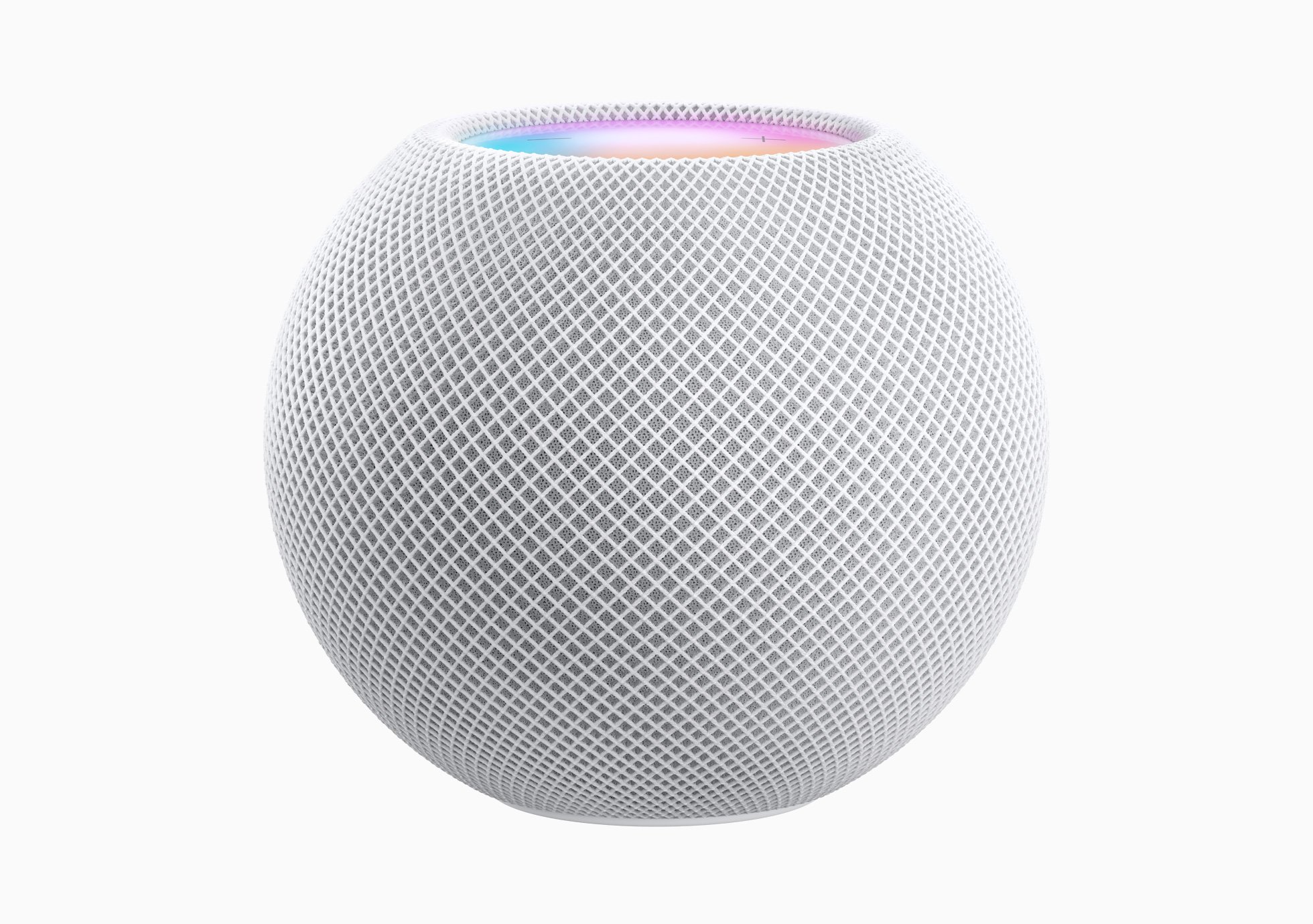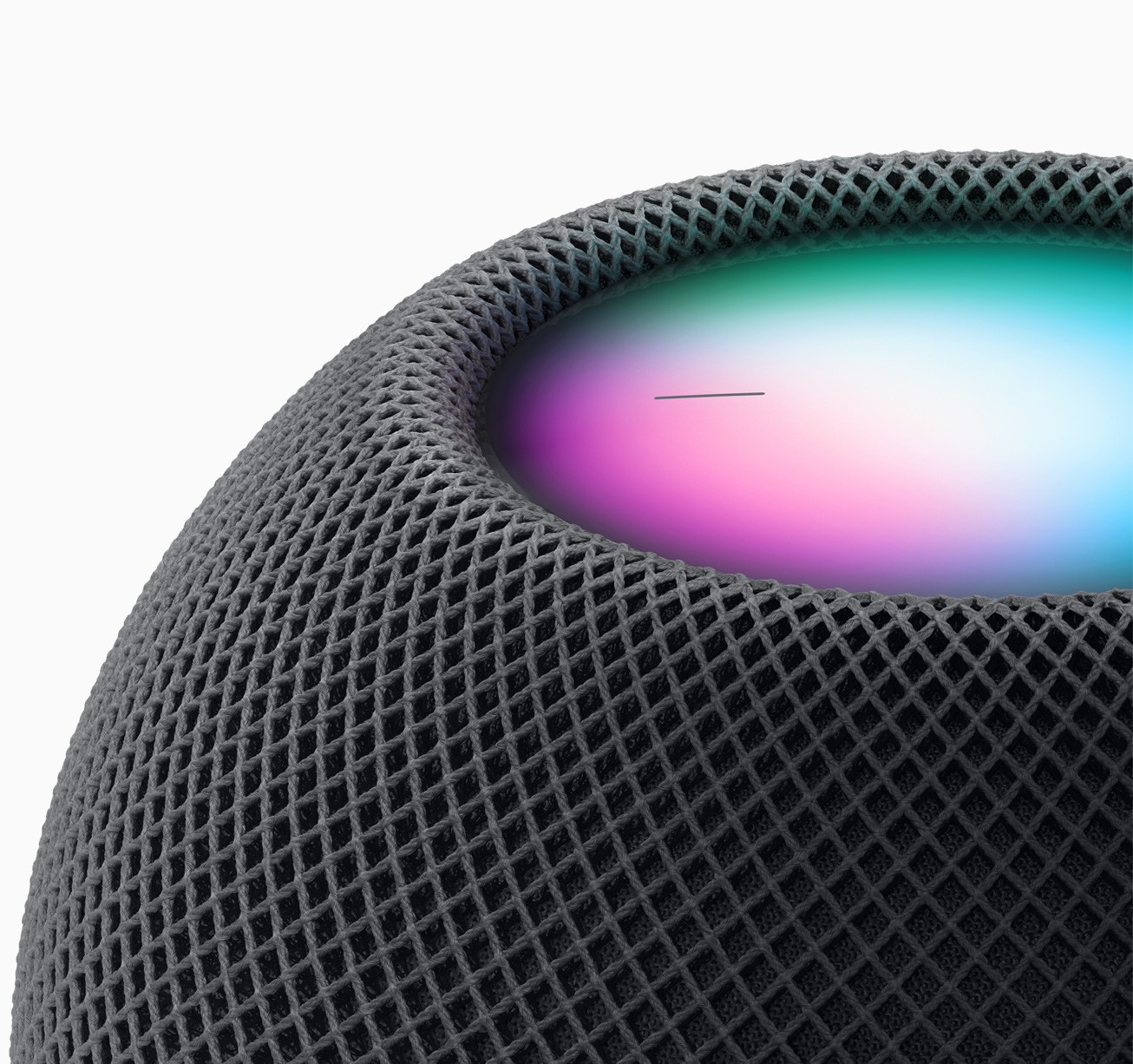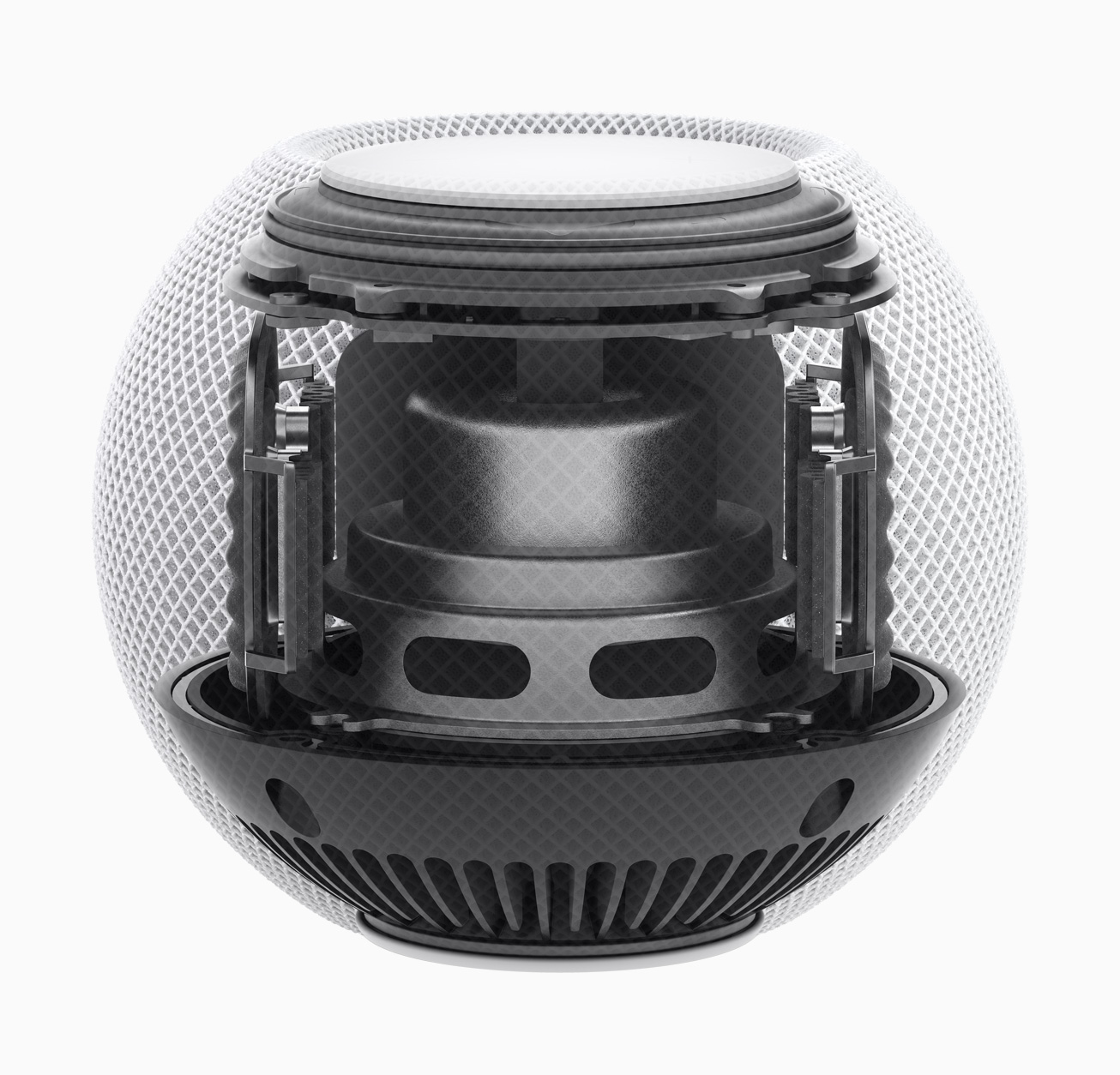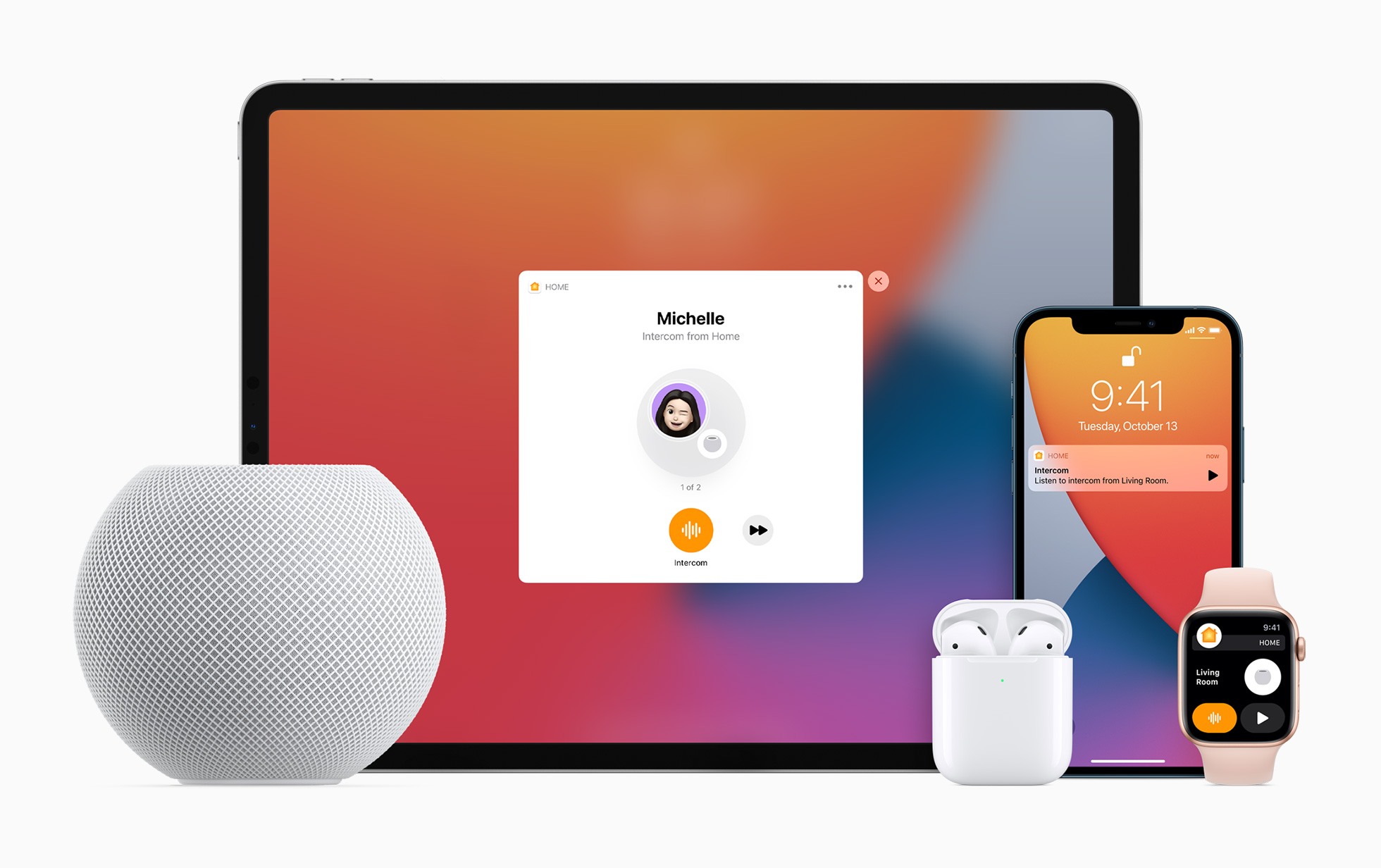I have two HomePods: one in our living room and another in my office. They sound terrific, and I’ve grown to depend on the convenience of controlling HomeKit devices, adding groceries to my shopping list, checking the weather, and being able to ask Siri to pick something to play when I can’t think of anything myself. My office isn’t very big, though, and when rumors of a smaller HomePod surfaced, I was curious to see what Apple was planning.
Today, those plans were revealed during the event the company held remotely from the Steve Jobs Theater in Cupertino. Apple introduced the HomePod mini, a diminutive $99 smart speaker that’s just 3.3 inches tall and 3.8 inches wide. In comparison, the original HomePod is 6.8 inches tall and 5.6 inches wide. At just .76 pounds, the mini is also considerably lighter than the 5.5-pound original HomePod.
Despite its size, Apple has packed a lot of technology into the HomePod mini. The company used the term computational audio during the keynote to describe the way the HomePod mini’s hardware and software are tuned to work together in a way that Apple said squeezes every ounce of performance possible out of the tiny speaker.
Surprisingly, the brains controlling the whole process is an Apple-designed S5 SoC, the same chip that powers the Apple Watch Series 5. To maximize performance, the mini’s software analyzes your music as it plays, adjusting the dynamic range and loudness as it controls the speaker’s neodymium magnet-powered driver and force-canceling passive radiators.
One difference between the HomePod mini and the original model is that the mini produces 360-degree sound that is directed downward by an acoustic waveguide. The original HomePod uses a beam-forming technology to direct sound instead. Also, the mini includes Apple’s U1 Ultra Wideband chip and, the original model does not, which means the mini will be able to handle proximity-related tasks that the original can’t.
The mini also includes three microphones that listen for Siri commands, plus one inward-facing microphone to cancel out what it is playing, so it doesn’t mask your commands. Like the original HomePod, two minis can be set up in a stereo pair. Also, they work with the Apple TV and synchronize playback with other existing HomePods and HomePods mini throughout your home.
Interestingly, the HomePod mini’s tech specs say that it also includes Thread radios, which are used to network Internet-of-Things devices. The footnotes of the tech specs say that the radios aren’t compatible with non-HomeKit Thread devices, but I wouldn’t be surprised if they could be someday in light of the Connected Home over IP project among Apple, Google, Amazon, and the Zigbee Alliance that was announced late last year.
Along with the HomePod mini’s hardware, Apple announced some new and upcoming, but previously announced features, of which it can take advantage. As Apple noted at WWDC, Siri is now faster, more accurate, and smarter, having gained 20 times more knowledge compared to three years ago.
Siri is also gaining the ability to respond to ‘What’s my update?’ Siri will respond to the query with a personalized response that includes information like the weather, your commute time, upcoming reminders and events, and the news. The feature is designed to be personalized to each speaker in a household and changes based on the time of day to provide appropriate responses. Siri will pass directions you request to your iPhone, so they’re available in Maps when you leave too.
Later this year, Apple says it is adding visual, audible, and haptic feedback when you use Handoff to transfer audio between an iPhone and HomePod. Third-party streaming music services like Pandora and Amazon Music are coming too in what Apple described at WWDC as an open program for streaming music services. There was no mention at today’s event regarding whether Spotify plans to join the program.
As with the original model, the HomePod mini can also act as a HomeKit hub allowing you to control individual HomeKit devices or set scenes. The Home app is also gaining an Intercom feature that lets you communicate with other members of your household using HomePods and HomePods minis. The feature also works with the iPhone, iPad, Apple Watch, AirPods, and CarPlay, but not the Mac.
On devices like the iPhone and Watch, users will need to press a play button to hear messages, so that Intercom messages don’t interrupt them when they shouldn’t. On the HomePods, though, the messages will be played automatically. There will also be an accessibility setting that can be turned on to transcribe incoming Intercom messages. Apple noted today that the Home app will gain a new Discover tab that will recommend smart home products to users too.
Of course, the most important question about the HomePod mini that cannot be answered yet is whether it sounds good. That remains to be seen, but I look forward to testing it and reporting back. I like the idea of having music, Siri, and HomeKit device access in more parts of my home, and the price and size of the HomePod mini make it a good candidate for my office and other rooms in our home.
You can follow all of our October event coverage through our October 2020 event hub, or subscribe to the dedicated RSS feed.







